The sound of clattering rocks caught our attention, as we scanned the slopes of Idaho’s Boulder-White Cloud Mountains. Idaho had a notable earthquake earlier in the year, and aftershocks continue to shake the mountains. But my wife Jennifer pointed excitedly: Mountain goats.
The herd of white animals, large and small, trotted across a seemingly impossible rock face. Even though they’re sure-footed creatures, they kicked up plenty of rocks as they went, sending them careening down the slope. I recalled wildlife biologist Douglas Chadwick’s description of these animals, calling them, “beasts the color of winter.” Indeed, their white coloration stands out on the summer’s slopes.
It’s always a treat to see mountain goats. And indeed, they’re unusual creatures: not true goats at all and found only in North American mountains.
They are part of a group of animals some call “goat antelopes,” species that bear superficial resemblance to both. While many North Americans have a familiarity with mountain goats (even though they are often confused with bighorn sheep), the other goat antelopes may be among the most unfamiliar large mammals on earth. Do you know the serow? The goral?
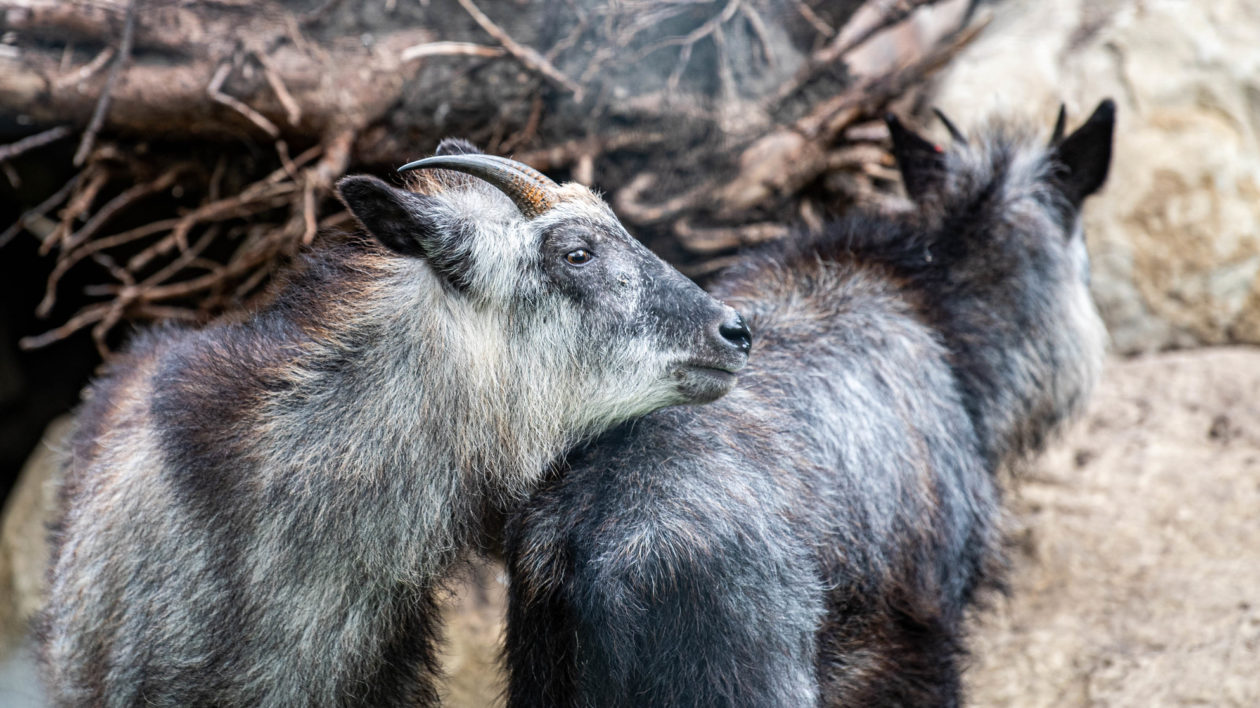
While goat antelopes can be found close to highly populated areas like Europe, Japan and Taiwan, most North Americans have never seen one. They are rarely exhibited in zoos or even natural history museums. They are not the subject of nature documentaries. Due to the mountainous terrain they prefer, they are not creatures easily viewed from safari vehicles. In fact, much about their taxonomy and evolution remains in doubt.
About that doubt: let’s first address the imperfect label of “goat antelope.” These animals are all bovids, a mammal family that includes true goats, sheep, oxen and antelopes. These animals are fairly familiar, but some bovids don’t fit neat classifications. The goat antelopes are placed by some as their own bovid tribe, the Rupicaprini.
This is contested, though. Evolutionary relationships of mountain mammals can be difficult to determine due to the poor fossil records in high-altitude environs. Taxonomy of the goat antelopes is constantly being revised; new species classifications appear frequently, with the most recent published this June.
But don’t get bogged down in taxonomic debates. Enjoy these creatures for what they are. A frequent theme on Cool Green Science is that we don’t know as much as we think. There are still mysteries out there. And this includes even large mammals. Enjoy these weird, fascinating and, yes, cute creatures of the high mountains.
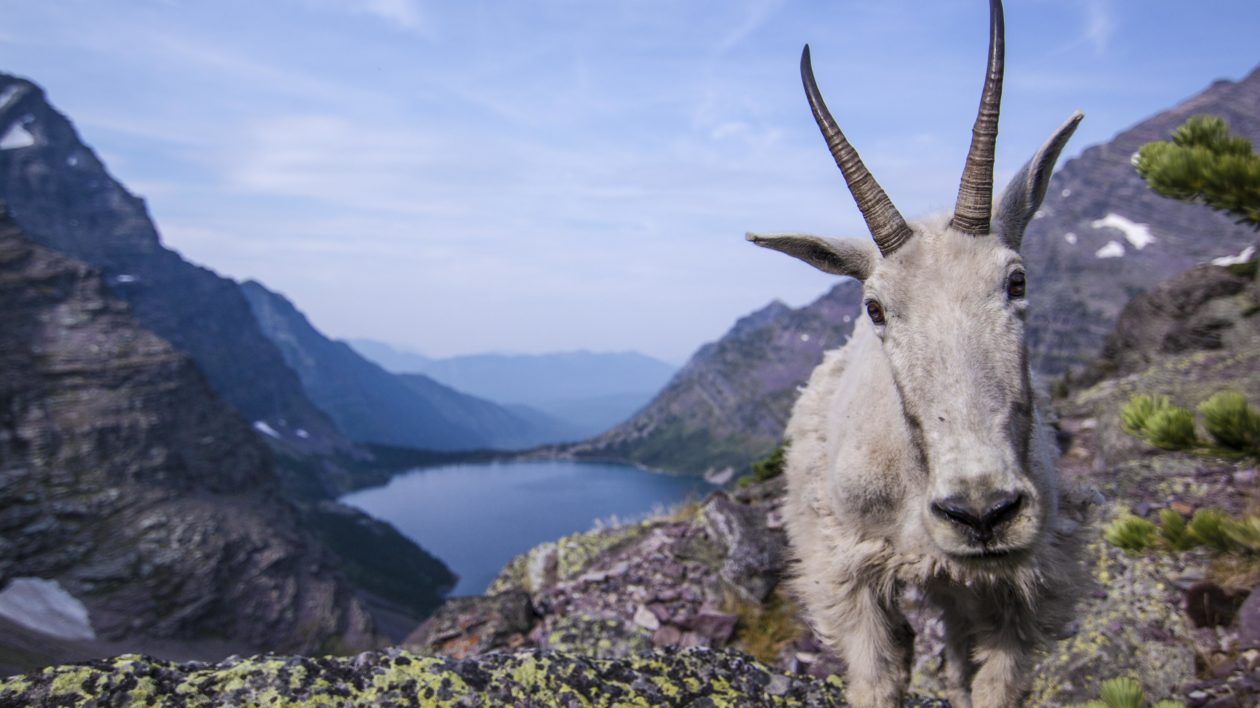
Mountain Goat
Yes, they look like goats. No, they’re not goats. True goats are found in a variety of rocky terrain in Eurasia and northern Africa. They have thick horns and sleek hides. So while mountain goats may superficially resemble goats, they actually are quite different.
Mountain goats are found at higher elevations, and only in North America. Their thick coats are much furrier than true goats. Their skull bones are lighter. And their horns are relatively short and slender. They are not built for the epic battles that characterize the males of true goats.
It’s difficult to find a mountain goat in an ugly place. They’re almost always in stunning mountain scenery, making their way over seemingly impossible cliff faces. They are often seen in national parks and wilderness areas, leading many to associate them with wild and untrammeled places. But the presence of mountain goats doesn’t necessarily indicate areas with a lack of human influence. In fact, mountain goats themselves are often a sign of humanity’s footprint.
That’s because mountain goats, as charismatic animals, have been introduced to new areas well outside their native range. They are now found in the Black Hills, in Olympic National Park, Colorado and Utah, all places once free of mountain goats. And while they are beautiful animals, non-native mountain goats are not without consequences.

In the Grand Tetons, they threaten native bighorn sheep with disease, which has led to control and culling efforts. Most people are fine if land managers control weeds. But when they control a large, majestic mammal, things get controversial fast, drawing the ire of everyone from animal rightists to big game hunters.
In Olympic National Park, they trample sensitive mountain vegetation, but the most-reported threat is to people. Those slender horns may not pose much threat to other mountain goats, but they can be dangerous to park visitors. An experienced hiker was killed by an aggressive mountain goat in 2010.
Mountain goats seek out mineral licks in their natural habitat, but those licks are in short supply in the Olympics. They’ve instead turned to “salt licks” created by humans urinating. As the mountain goats have become more bold, they’ve taken to harassing humans…for their pee. This creates a really awkward, totally Anthropocene scene in what many imagine to be pristine mountains. Many of the mountain goats are now being airlifted back to their natural habitat.
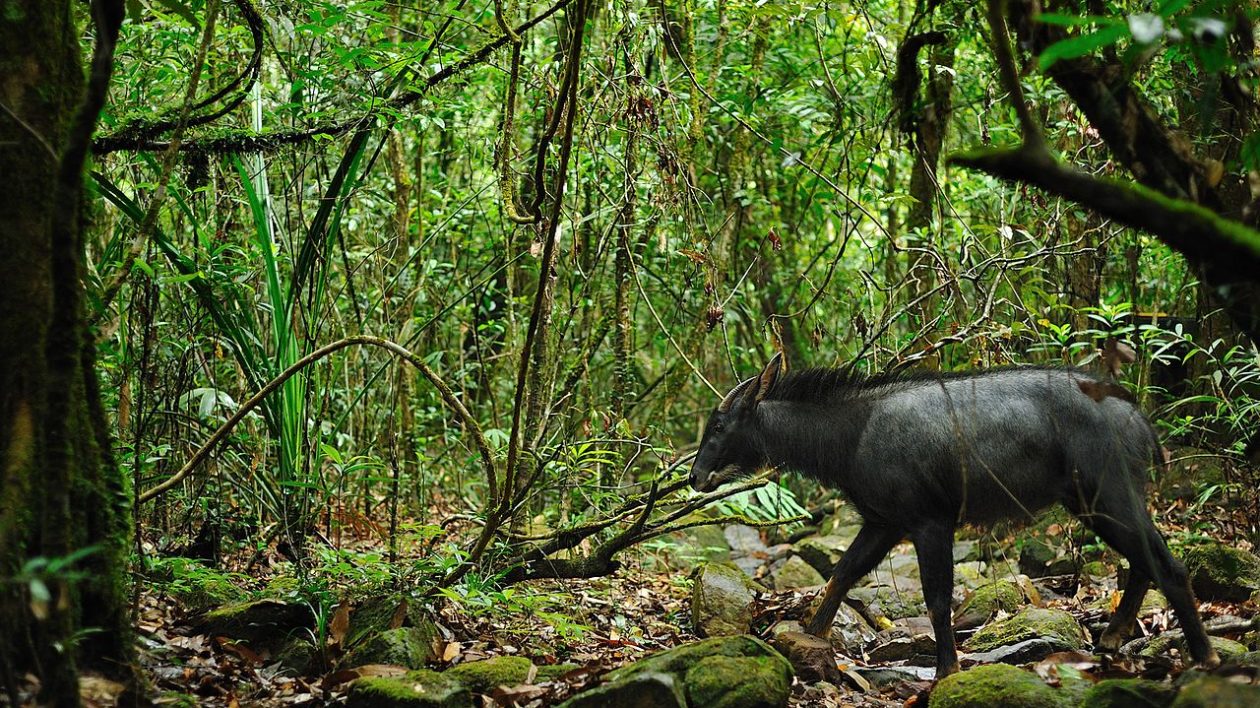
Serow
We think of hoofed mammals as among the most familiar creatures on the planet. And yet many North Americans have no idea about the ungulates that roam Asia’s mountains, like the ox-like takin, a species covered in a previous blog. Or the serow, an animal so unique it almost defies description. Even in its native range, it is often mistaken for a goat, a pig or a deer, and it looks just enough like any of those to make this understandable.
There are seven species of serow. They live in the Himalayas and on the forested slopes of Thailand and Sumatra. One secretive species even lives in the forests of Taiwan. But the most studied – and arguably, the cutest – lives in Japan. The Japanese serow is quite fuzzy, and resembles something created by George Lucas or perhaps Tolkien.

The Japanese serow is territorial, with both males and females marking their areas with glands and scat, and defending those territories against encroachment. They are solitary creatures, getting together only to procreate. Young are run off by mothers when they are old enough to defend themselves.
The Japanese serow nearly went extinct due to hunting, but in 1955, the country declared serows as a “Special National Monument,” granting it full protection. Conservation measures worked exceptionally well. This serow species thrives in dense forest, and the growth of Japan’s pine plantations actually provided great habitat.
The serow population grew to the point where there were conflicts with farmers and foresters; today their populations are controlled by culling and hunting. More than 100,000 animals now roam Japan.
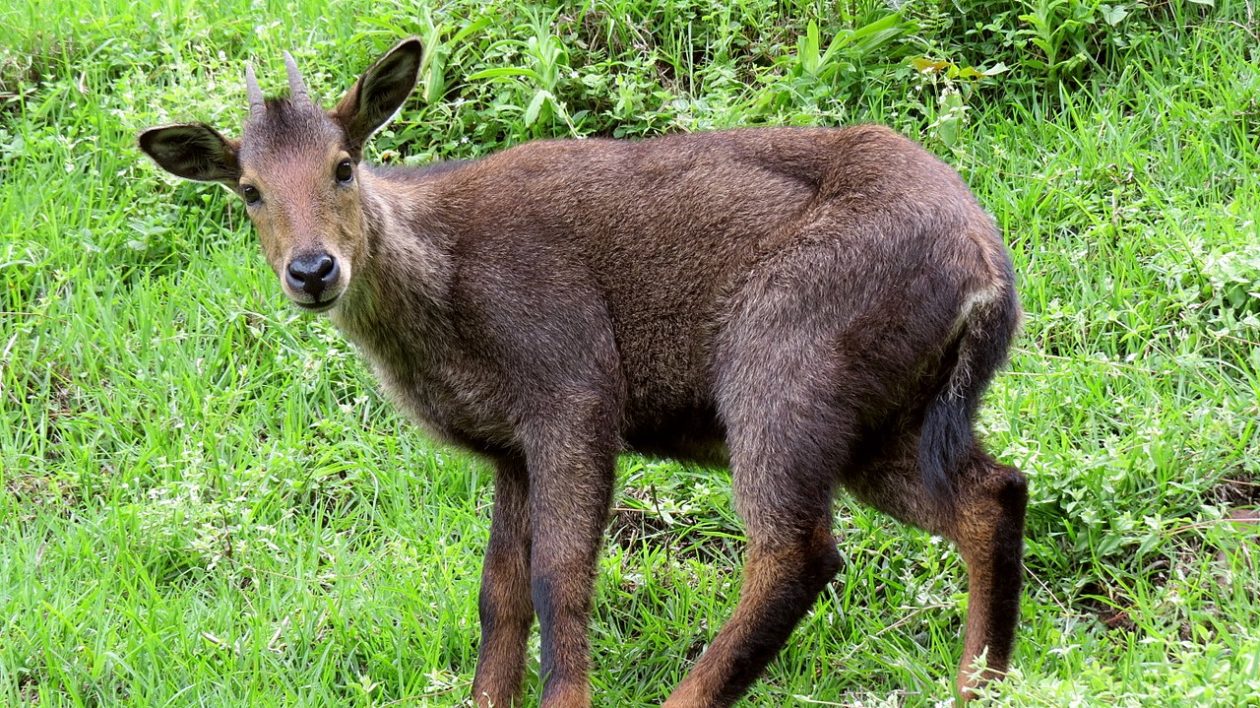
Goral
Another Asian mountain goat antelope, the goral if anything is even less recognizable than the serow. Even those who study gorals disagree on how many species there are, what one paper labeled “the never-ending story.” A paper published this June establishes 5 species based on phylogenetic analysis, which is also a middle ground between lumpers who say all gorals are the same species, and splitters who recognize 7 or more.
Goral look like a cross between a young domestic goat and a young African antelope. They are found on a variety of mountain ranges, including in China, Russia, Nepal, Bhutan, Korea, Laos, Vietnam and Thailand. Like other goat antelopes, they have the characteristic slender, small, curved horns.
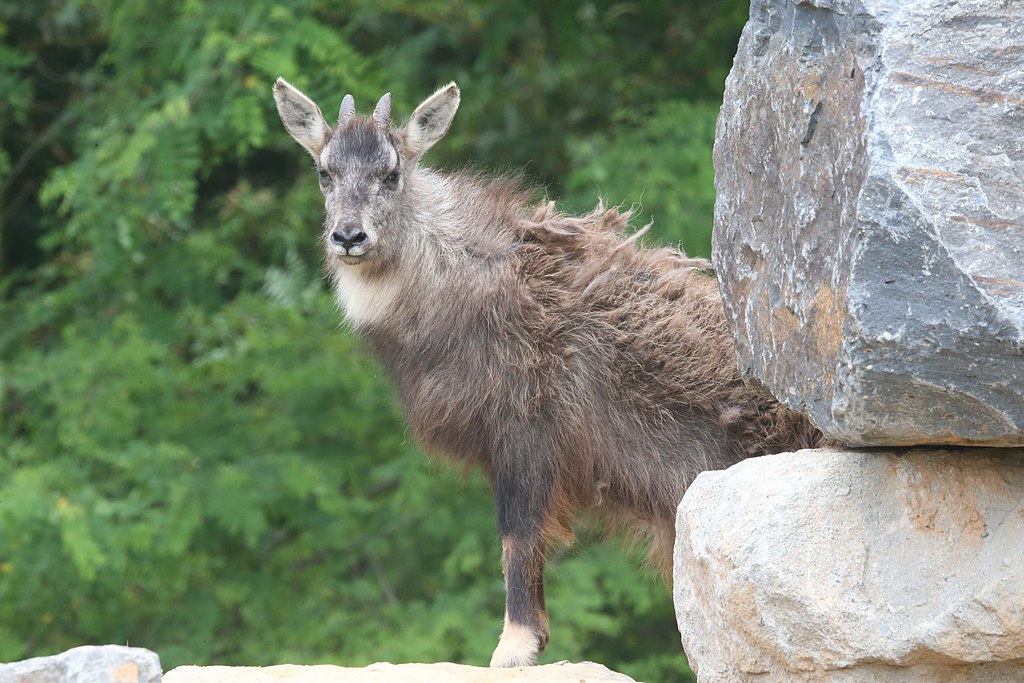
Many goat antelopes don’t face habitat destruction due to the fact that their high-altitude mountain homes make poor building sites and are often the first places to be protected as parks. They are also often well protected from poaching. The goral, though, still faces illegal hunting and even habitat loss.
In Nepal, they’re hunted for food. Some have proposed providing community incomes through ecotourism, as the goral habitat is fairly near the popular Chitwan National Park. The challenge is that Chitwan has tigers. And the proposed area has goral, which you may not have known about before reading this story. It’s hard to attract wildlife watchers to look for an animal they don’t know.
In Korea, the distinctive long-tailed goral faces an uncertain future because its habitat keeps getting chopped into smaller and smaller pieces. A recent proposed cable car project, a tourism project, would go right through prime goral habitat. It seems that goat antelopes could use some fans. I’d travel to see a goral, but I recognize I’m on the lunatic fringe of ungulate fans. Would you?

Chamois
Chamois roam near some of Europe’s most popular tourist areas, including the Alps, but once again they are often not known by North Americans. That’s probably because many don’t go to the Alps to look for wildlife, which is a pity, because chamois are cool-looking animals. They look like brown goats but with very curved horns.
There are two species found in Eurasia, with a number of distinctive subspecies. I recommend Jose R. Castello’s excellent guide, Bovids of the World, for in-depth coverage of chamois and more. (Plus, the illustrations are incredible).
Chamois are fairly common in the Alps of Austria, France and Italy. However, there is evidence that skiing, hiking and other recreation can scare chamois away from the best habitat.
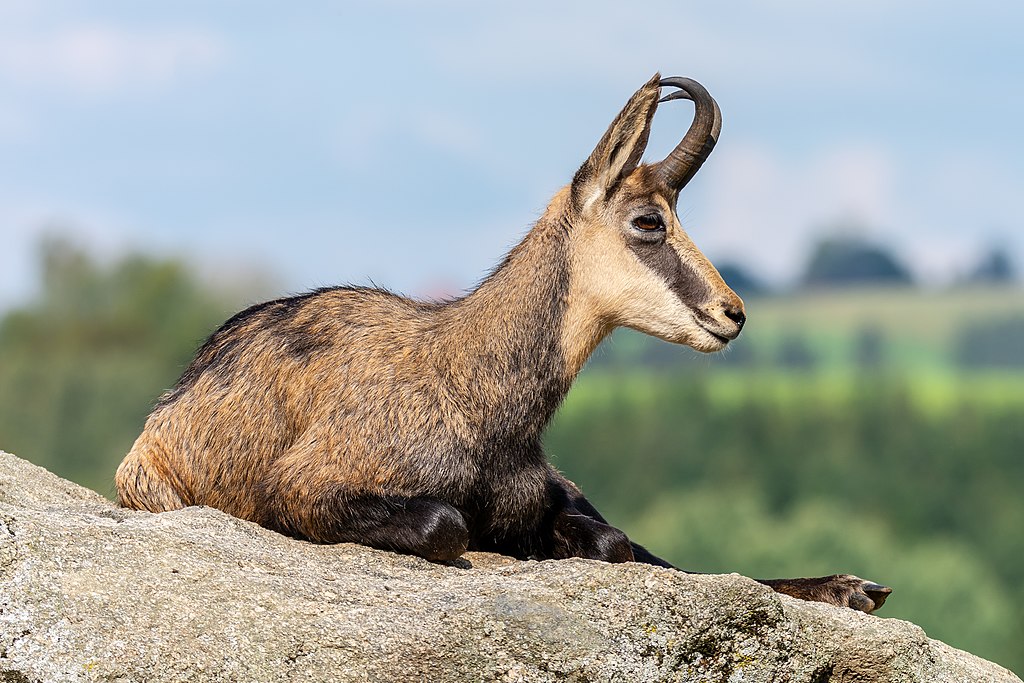
But the biggest threat to chamois is likely climate change. Many mountain-dwelling animals in well-managed protected areas have to this point seemed fairly safe. But as the world heats up, where do animals that need the cool temperatures and specific plants of high altitude go to escape?
For chamois in the Italian Alps, the climate change impact is particularly dramatic: young chamois now weigh 25 percent less than they did just 30 years ago. They are miniaturizing before our eyes. The initial assumption was this was due to food availability, but there’s still plenty of nutritious forage in the Alps.
The decrease may be because chamois now have to spend time resting and seeking shade when they normally would be eating. Do you feel like eating a heavy meal in the heat of the summer? Chamois might not either.
Goat antelopes may be among the least-known large mammals, but maybe it’s time for that to change. For many conservationists, the “rock and ice” of high mountains are stunning, but not particularly great for biodiversity. But there are large mammals up there: curve-horned, shaggy beasts clattering over the cliffs.
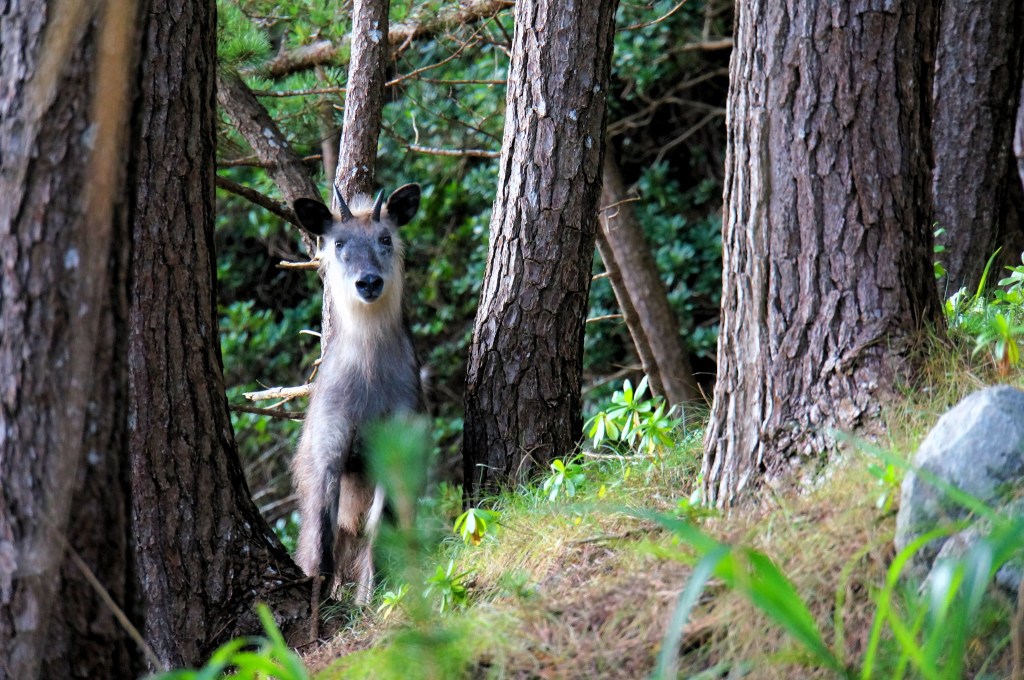



I didn’t know there were these several species of goat antelopes and what extraordinary creatures they are. Thanks, Matt – always interesting!
RE: Japanese Goral “populations . . . controlled by culling and hunting.”
For those with ecological, evolutionary, and population biology backgrounds, the Gray Wolf species in Japan was the target of the relatively recent dispersal into Japan of the present culture in the range of 300 CE and later.
the old Jomon peoples and some coastal peoples had entered during the glacial period, when seas were low and land bridges more common.
The Ainu, clearly genetically related to Siberian peoples rather than the Han/more southern Asians, had a cultural respect for those predators (who may also have entered , along with ancestors of the Goral, in an earlier glacial event).
We can only infer that the Jomon had absorbed this reverential acceptance and ecological cultural view, due to the wolf’s prevalence, until the rise and control of the Yayoi – ancestors of the present Japanese and culture.
While the earlier culture[s] were significantly hunter-gatherer with some horticulture and small agriculture, they did not persecute. I won’t go into the worldview-concepts involved, here, but that cultural aspect allows strong inference as to the more ecological and nonpersecutory view of the Jomon, especially the Ainu.
It was not until the 1600s, it seems, that the Daimyos, the warlords controlling land areas and the extreme disputational war society initiated strong persecution of the wolf and the natural and effective “control” of the Goral and other populations. A brown bear relative also existed until eradication as well; as you know, bears are more omnivorous. Due to some cultural killing, bear populations had been diminished by that earlier culture, but due to cultural narrative, the Ainu did not extinguish the bear.
The present culture, armed with the usual firearms, DID extinguish the wolf, and purposefully, as edict was to do so.
A more positive ecological ethic did occur during that last mentioned century, as the Daimyo[s] recognized that their warring and population were vastly overexploiting, deforesting the Japanese islands, and so , through edict, severely limited the killing of trees.
This has resulted in Japan’s being the most forested of all the “developed” nations, having a policy conserving their forests, unlike all other modern states.
Check LIFE ON THE ROCKS: A Portrait of the American Mountain Goat by Bruce Smith, for the best photos. I was the sub-district ranger in Olympic National Park, when the population exploded, Dr Olmsted documented the floral impact, and Victoria Stevens studied the population itself, assisted by Doug Chadwick, and Bruce Moorhead the park’s biologist.